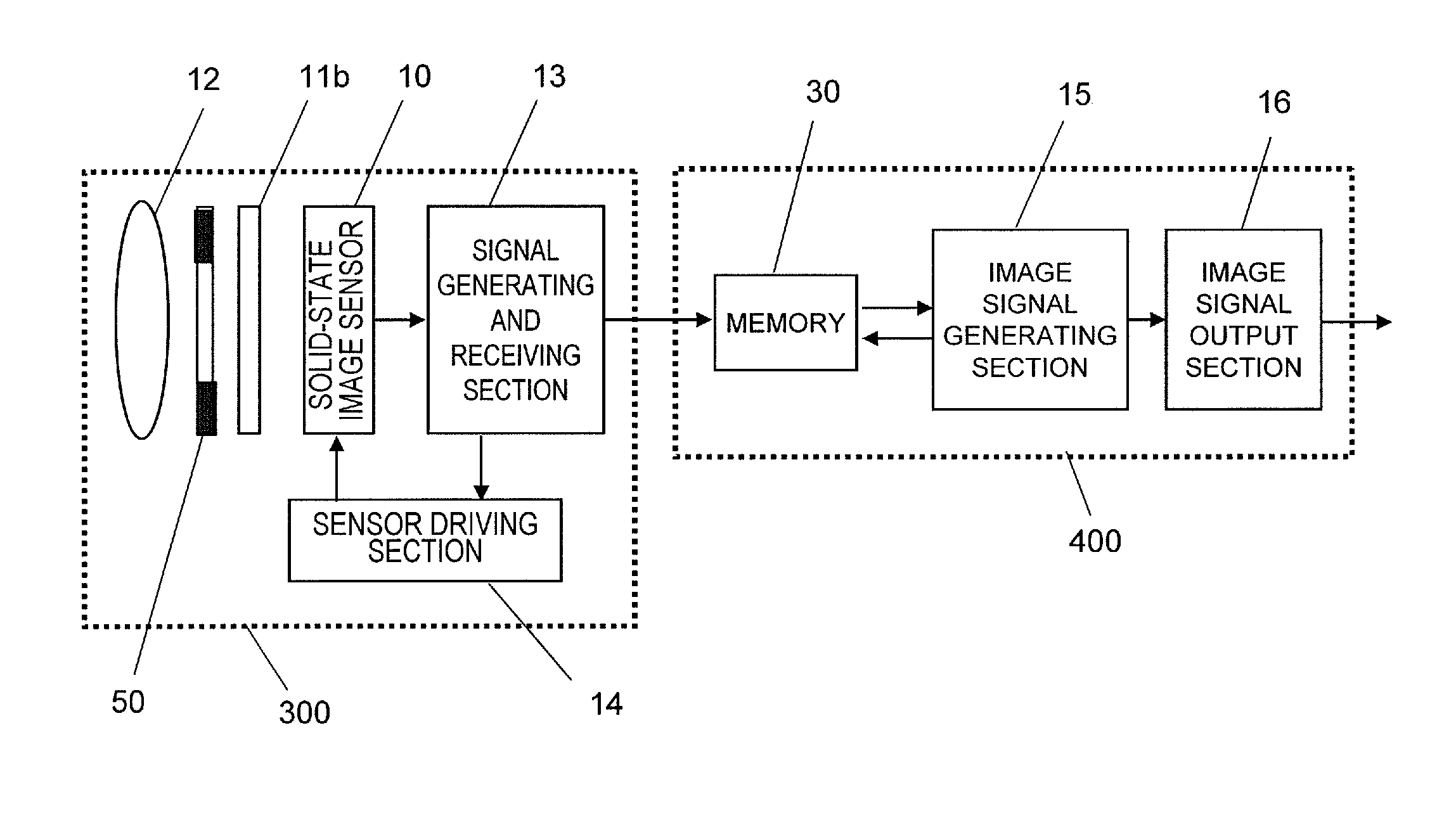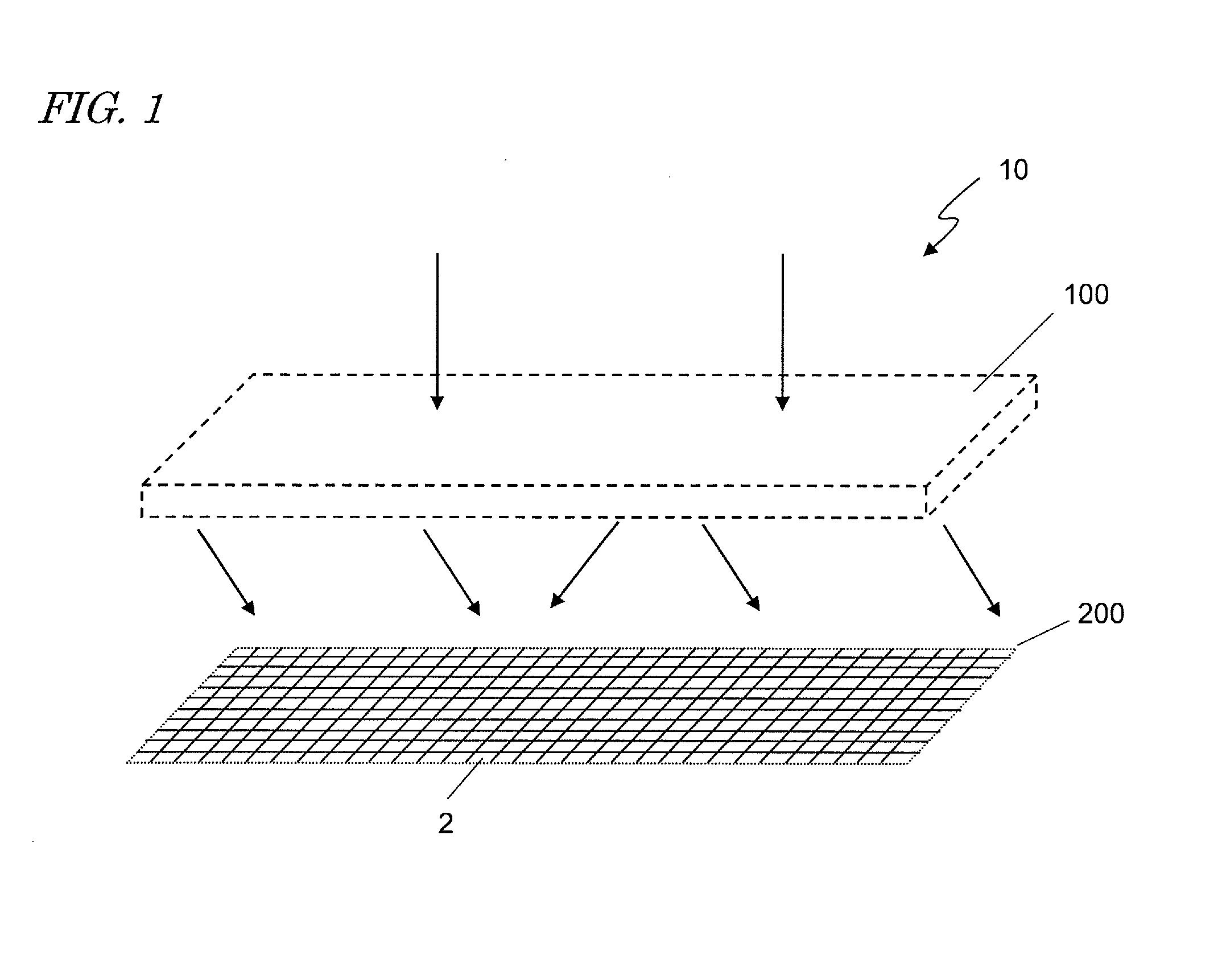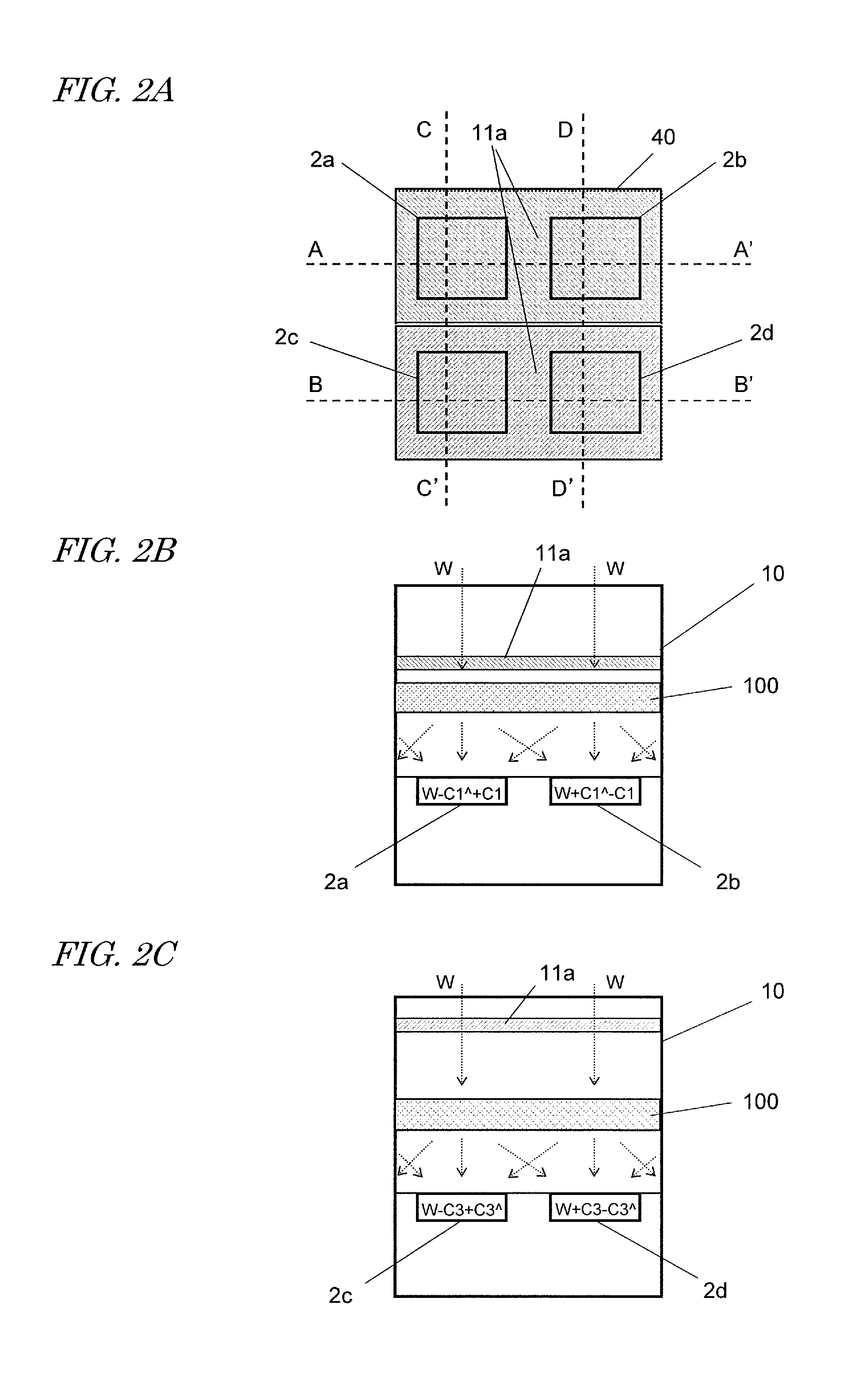Solid-state image sensor
a solid-state image and sensor technology, applied in the field of solid-state image sensors, can solve the problems of reducing the optical efficiency of the camera, the decrease of the optical efficiency of the color filter, and the intensity of the light falling on a single pixel, so as to increase the number of photosensitive cells to use, high optical efficiency, and high color reproducibility
- Summary
- Abstract
- Description
- Claims
- Application Information
AI Technical Summary
Benefits of technology
Problems solved by technology
Method used
Image
Examples
embodiment 1
[0092]FIG. 3 is a block diagram illustrating an overall configuration for an image capture device as a first embodiment. The image capture device of this embodiment is a digital electronic camera and includes an image capturing section 300 and a signal processing section 400 that receives a signal from the image capturing section 300 and outputs a signal representing an image (i.e., an image signal). The image capture device may either generate only a still picture or have the function of generating a moving picture.
[0093]The image capturing section 300 includes an optical lens 12 which images a given subject, an optical diaphragm 50, an optical filter 11b, and a solid-state image sensor 10 (which will be simply referred to herein as an “image sensor”) which converts the optical information that has been gotten through the optical lens 12 and the optical filter 11b into an electrical signal by photoelectric conversion. The image capturing section 300 further includes a signal genera...
embodiment 2
[0126]Next, a second embodiment will be described with reference to FIGS. 8A through 8D. In an image capture device according to this embodiment, its image sensor 10 has dispersive elements with a different configuration, and performs signal processing in a different way, from in the image capture device of the first embodiment. But other than that, quite the same members are used in both of the first and second embodiments. That is why the following description of this second embodiment will be focused on only the differences from the image capture device of the first embodiment, and their common features will not be described all over again to avoid redundancies.
[0127]FIG. 8A illustrates a basic configuration for an image sensor 10 according to this embodiment. FIGS. 8B and 8C are cross-sectional views as respectively viewed on the planes C-C′ and D-D′ shown in FIG. 8A. The dispersive elements of the image sensor 10 of this embodiment are configured as shown in FIGS. 8A through 8C...
PUM
 Login to View More
Login to View More Abstract
Description
Claims
Application Information
 Login to View More
Login to View More - R&D
- Intellectual Property
- Life Sciences
- Materials
- Tech Scout
- Unparalleled Data Quality
- Higher Quality Content
- 60% Fewer Hallucinations
Browse by: Latest US Patents, China's latest patents, Technical Efficacy Thesaurus, Application Domain, Technology Topic, Popular Technical Reports.
© 2025 PatSnap. All rights reserved.Legal|Privacy policy|Modern Slavery Act Transparency Statement|Sitemap|About US| Contact US: help@patsnap.com



